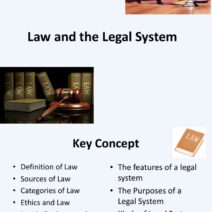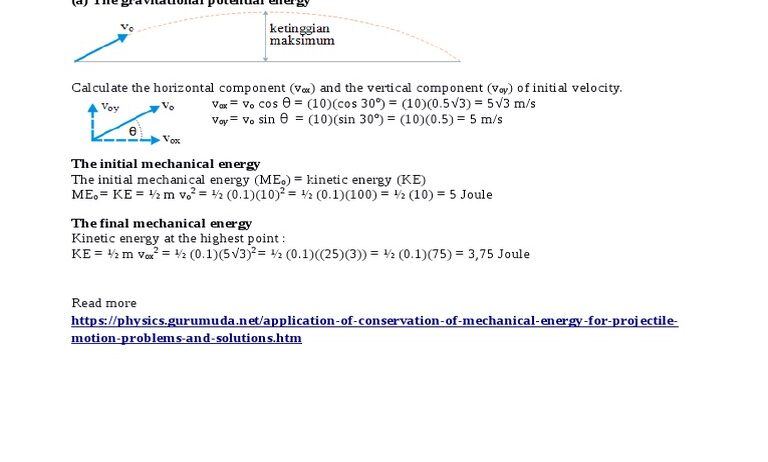Understanding mechanical energy conservation in the context of projectile motion invites us to explore the intriguing principles of physics. When an object is propelled into the air, it enters a flight path influenced by forces that dictate its behavior. The laws governing this motion reveal an elegant balance between kinetic and potential energy, illustrating how energy is conserved even when the object is in motion.
To delve into this concept, let us define two fundamental forms of mechanical energy: kinetic energy (KE) and potential energy (PE). Kinetic energy is the energy possessed by an object due to its motion, quantifiable through the equation KE = 1/2 mv², where m represents mass and v signifies velocity. Conversely, potential energy is the stored energy that an object possesses due to its position in a gravitational field, typically expressed as PE = mgh, where h is the height above a reference point.
During projectile motion, an object is launched and follows a specific trajectory, typically a parabolic path, influenced by gravity and initial velocity. Initially, when the object is at rest on the ground, its energy is entirely at rest—meaning it possesses potential energy relative to a baseline but no kinetic energy. Upon projection, energy begins to transform: the potential energy converts to kinetic energy as the object’s speed increases while descending.
The crux of mechanical energy conservation lies in the interplay between kinetic and potential energy throughout the projectile’s trajectory. When examining the situation, one can observe that at the apex of the trajectory, the object’s velocity is momentarily zero. At this point, kinetic energy reaches its minimum value, while potential energy is at its zenith. Conversely, as the object descends, potential energy diminishes; simultaneously, kinetic energy escalates, illustrating the transformation of energy within the closed system.
It is pivotal to note that mechanical energy is deemed conserved in an idealized environment, absent of external forces, such as air resistance. In a vacuum, where no friction or drag exists, the total mechanical energy of the system remains constant. This principle is governed by the law of conservation of energy stipulating that energy cannot be created or destroyed; it merely changes forms. However, in the realm of real-world scenarios, external forces invariably intrude. The presence of air resistance often dissipates kinetic energy as thermal energy, complicating the conservation equation.
This leads to the question: Is mechanical energy truly conserved in projectile motion? The answer embodies nuances. In a perfectly isolated system—one devoid of external influences—the concept remains valid and applicable. The total mechanical energy, comprising the sum of kinetic and potential energy, should equate and remain unaltered throughout the projectile’s trajectory. Yet, in a practical world—defined by variables such as wind resistance and drag—conservation becomes tenuous. Realistically, some mechanical energy transforms into other forms, thus rendering complete conservation practically elusive.
Engaging with the mathematical implications of projectile motion can further clarify this energy dynamic. Take, for instance, an object projected upward with an initial velocity v₀. As it ascends, its height h and velocity decrease until reaching the peak. At this apex, kinetic and potential energy ratios illustrate a significant energy transition. The potential energy maximizes, signifying energy retention through height gain, while kinetic energy diminishes to zero. As the object descends, conservation of energy is observable—energies switch roles once more as potential energy decreases while kinetic energy increases, corresponding with downward acceleration.
Exploring various angles in projectile motion, such as angle of elevation, can further enrich understanding. Launching an object at different angles alters its range, velocity, and height, leading to shifts in energy transformations. At 45 degrees, one achieves optimal range, facilitating a balance between height and horizontal distance. Such exploratory variations expand not only comprehension of projectile motion but also cultivate curiosity about energy conservation principles across various physical contexts.
While the notion of mechanical energy conservation simplifies complex actions, imbued in this concept is an invitation to dive deeper into fundamental physics. Engaging with problems involving projectile motion invites learners to consider their understanding of energy transformation. Attempting practical experiments, such as throwing a ball or leading a water balloon, yields firsthand insight into these principles; even running simulations of motion showcases how kinetic energy and potential energy exhibit dynamic interaction, affirming the significance of conservation laws.
In conclusion, the inquiry into whether mechanical energy is conserved in projectile motion illuminates profound insights into the nature of energy itself. While idealized conditions enforce the principles of conservation, reality’s imperfections challenge simplistic models. This nuanced perspective not only cultivates a deep appreciation for the laws of physics but also emphasizes the importance of inquiry and experimentation in learning. Exploring these concepts encourages critical thinking—a vital skill not just in scientific disciplines, but in life’s multitude of challenges.








